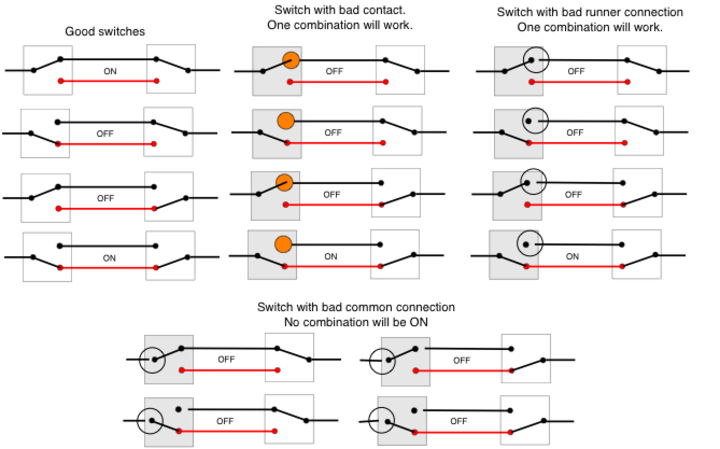...the logic behind this and how it works to isolate one or the other.
Turn switch 1 up.
Turn switch 2 on and off. If it does go on and off, good
Next turn switch 1 down, then go to switch 2 and turn it on and off
If the light does not go off and on with it in one of those two tests it is the switch 1 that is bad
Doing it the opposite way tests Switch 2. Jim
Turn switch 1 up.
Turn switch 2 on and off. If it does go on and off, good
Next turn switch 1 down, then go to switch 2 and turn it on and off
If the light does not go off and on with it in one of those two tests it is the switch 1 that is bad
Doing it the opposite way tests Switch 2. Jim




